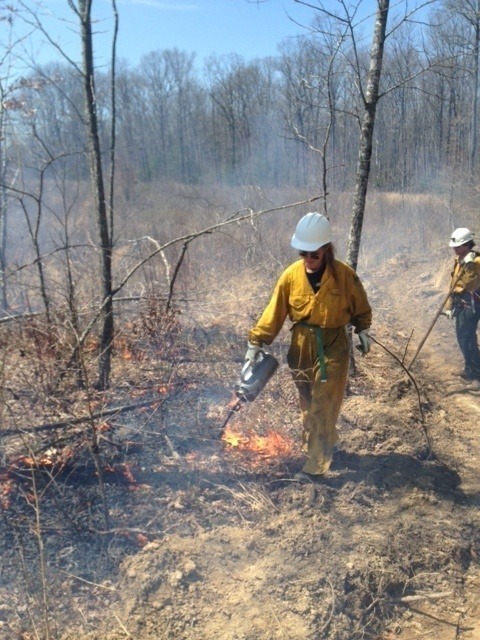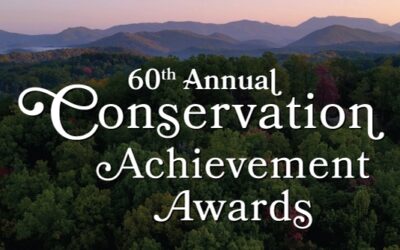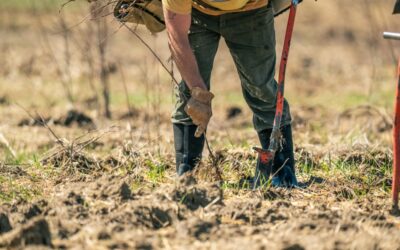Tennessee Wildlife Federation’s Habitat Conservation Program uses prescribed burns to restore forest health and native wildlife habitat.
Collaborating to Protect and Restore Native Forests
Through a recently awarded grant, more than 5,400 acres of shortleaf pine forests on the Cumberland Plateau will be restored and enhanced. A collaboration among several organizations will use prescribed fire and strategic plantings to revitalize this vanishing habitat that is critical to several species.
The project will be implemented by The Forest Stewards Guild and Tennessee Wildlife Federation through its Habitat Restoration and Conservation program. Habitat improvement efforts will also be supported by Sewanee: The University of the South, Berea College, Tennessee Department of Environment and Conservation, Tennessee Wildlife Resources Agency, and The Forestland Group.
The $200,000 grant was awarded by the National Fish and Wildlife Foundation (NFWF) through its Cumberland Plateau Stewardship Fund and will be matched by the partnering organizations and The Lyndhurst Foundation to double its impact. This grant is one of seven projects recently funded by NFWF.
“We’re excited to continue working hand-in-hand with Tennessee Wildlife Federation and other partners on the Cumberland Plateau,” said Nick Biemiller, southeast regional coordinator for the Forest Stewards Guild. “This project will increase capacity for prescribed fire and restore shortleaf pine ecosystems across thousands of biologically significant lands in the Cumberland Plateau.”
Native pine-oak forests on the Plateau are dominated by a mixture of shortleaf pines and oaks. Both Tennessee and Kentucky have experienced a 70 to 80 percent reduction in shortleaf pine since 1980. Causes of the decline include the absence of fire on the landscape, failure to replant shortleaf pine after management activities, conversion to non-native forest types, and disease.
Why Pine-Oak Forests?
“Much of the restoration will happen on recently cleared pine plantations and on some of Tennessee’s most heavily used public lands for hunting, hiking, and wildlife watching,” said Chris Roberts, director of conservation at Tennessee Wildlife Federation.
The project will restore native pine-oak forest habitats on the Plateau by engaging landowners at demonstration forests and creating forest management plans that are compliant with federal cost-share programs. Restoration activities to enhance wildlife habitat will include responsible timber management, prescribed burns, and planting shortleaf pine.
The Federation and the Guild are working with private Tennessee landowners interested in the project.
“It’s exciting to see so many landowners interested in restoring forest habitats on the Plateau—to return to its natural state and better support wildlife,” said Roberts. “As part of my habitat conservation work with the Federation, I’m encountering more and more landowners interested in taking a more long-term approach to managing their land.”
Landowners who believe their property may be a fit for large-scale habitat restoration are encouraged to fill out the landowner interest form.
Restoring Tennessee’s Public Land
In addition to working with landowners, the grant will support projects on large tracts of public land. Already selected for restoration are more than 2,000 acres within Grundy County’s Savage Gulf State Natural Area and more than 2,000 acres within the Bridgestone-Firestone Centennial Wilderness in White County.
“We are pleased to see this grant awarded and to be a part of this collaborative effort,” said Jim Bryson, deputy commissioner of the Tennessee Department of Environment and Conservation. “As part of South Cumberland State Park and on the Registry of National Natural Landmarks, Savage Gulf State Natural Area is one of our state’s most scenic areas and supports a number of high-quality natural communities and rare species. This restoration effort is recognition of the importance of the habitat at Savage Gulf and will meet a significant need.”
This latest grant is an expansion of an earlier collaboration among NFWF and these Tennessee and Kentucky partner organizations. For both public and private lands, the first phase restored nearly 1,000 acres and created habitat management plans for more than 14,000 acres. The latest grant funds the implementation of more of these plans.




